(1300 products available)


























































































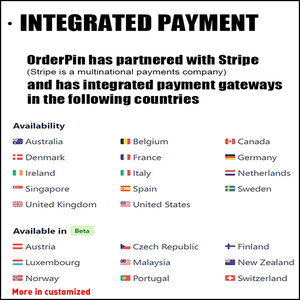
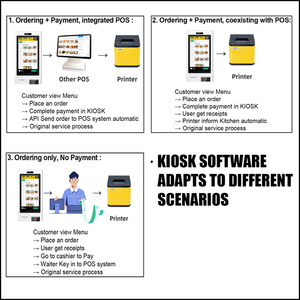






























































































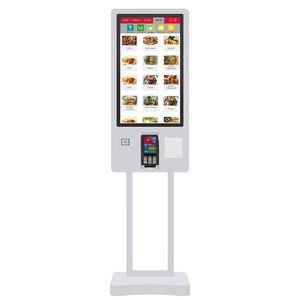


















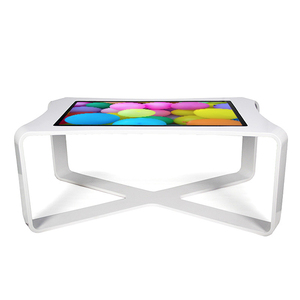
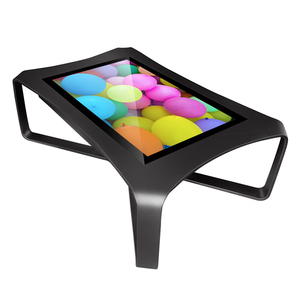





















Fast food restaurants rely on efficient operations and speedy service delivery, which makes the fast food computer system integral to the business. Point-of-sale systems for fast food, which feature touchscreen ordering, drive-through ordering, mobile and self-ordering kiosks, and order management software, are among the various types of computer systems used in this industry.
One of the most crucial components of a fast food restaurant's computer system is its point-of-sale (POS) system. It expedites the ordering and payment processes, enhancing customer service and optimizing employee productivity. The POS system collects the customer's order through a touchscreen interface, which automatically updates the kitchen staff of the precise order details and payment information. This minimizes human error and ensures accurate and timely orders.
The drive-through ordering system is another critical component of the fast food computer system. It comprises a digital menu board, an order-taking intercom, and a POS terminal for payment processing. Customers place their orders at the drive-through using the intercom, which is recorded in the system and sent to the kitchen for preparation. This system allows fast food restaurants to serve customers on the go, further enhancing their efficiency and convenience.
A the fast food computer system also incorporates mobile and self-ordering kiosks. Self-ordering kiosks empower customers to place their orders independently at the kiosk terminal, which is integrated with the POS system and order management system. These kiosks offer a user-friendly interface where customers can browse the menu, customize their orders, and make payments electronically. Mobile ordering apps enable customers to order food in advance through their smartphones. These applications are integrated with the POS system, allowing seamless ordering and payment processing.
Fast food computer systems utilize order management software to streamline operations and ensure efficient order processing. This software receives orders from various channels, such as the POS system, drive-through intercom, mobile app, and self-ordering kiosks. It organizes the orders and directs them to the appropriate kitchen stations for preparation. The order management system tracks the order status in real-time, enabling the restaurant staff to monitor the progress and ensure timely service.
In addition to enhancing operational efficiency, the fast food computer system also provides valuable data and analytics for business management. The POS system and order management software collects and stores data on sales, customer preferences, and operational performance. This data can be analyzed to gain insights into customer behavior, optimize the menu offerings, and make informed business decisions.
Real-time Processing:
The fast food computer system is built to process orders in real-time. This means that every order that comes in is registered, cooked, or prepared according to the company's standards and then delivered to the customer quickly.
Feedback System:
For any business to grow, there has to be a system in place to learn from customers. Fast food restaurants use customer feedback to improve the quality of service and food.
Inventory Management:
A fast food computer system has inventory management features that help restaurant owners keep track of their supplies and stock. It helps monitor things like when to order more supplies and when to restock. It also helps reduce waste, and with that, losses are minimized.
Employee Management:
The system helps with the management of employees, such as keeping track of working hours, shifts, and even performance. With this feature, it is easier to schedule employees according to the expected customer traffic.
Training and Support:
Computer systems for fast food come with training for the staff. This helps to maximize the usage of the system. Also, there is support service for troubleshooting.
Scalability:
This means that as the business grows, the computer system can be expanded to meet the increasing demand without service quality being affected.
Integration:
Apart from the features of fast food management system outlined above, one more important feature that should be mentioned is that it can be integrated with other existing systems such as supply chain, payroll, and customer relationship management (CRM).
Cloud-based System:
One of the modern features of fast food restaurant computer systems is that it can be accessed from anywhere, anytime. This allows restaurant owners to manage their operations remotely, which is very convenient.
Data Security:
It is important to protect both customers' data and the restaurant's data. Fast food restaurant management systems have security measures to protect against unauthorized access to sensitive data.
Fast food restaurant computer systems have a wide range of applications in the restaurant industry. Here are some of the important applications:
When choosing a computer system for fast food, some important factors should be carefully considered to ensure it meets specific business needs. Remember that every restaurant has unique requirements, and choosing the right POS system should be tailored to those needs. Also, remember to stay updated with trends in the fast food industry and advancements in POS technology to ensure the system remains relevant. Evaluate feature requirements, including order management, payment processing, staff management, and inventory tracking. Consider choosing a system that can be customized to specific needs.
Finding a reliable supplier for a computer system in the fast food industry can be a crucial factor in ensuring successful implementation and support. Research potential suppliers and read customer reviews and case studies showcasing their system in the fast food industry. Look at the features and benefits of the fast food POS system. Some fundamental things to consider are ease of use, integration, customization, scalability, data security, support, and cost.
It is very important to involve staff in selecting a fast food computer system. Choose a system that is easy to operate to reduce training time and potential mistakes. Also, select a system that can work together with all existing business equipment, such as kitchen display systems, payment terminals, and mobile ordering devices. Integration can be very helpful in streamlining operations and providing a smooth experience for both workers and customers. Consider selecting a system that can grow and adapt to changing demands, and look for features such as flexible pricing models, user-based licensing, and the ability to add new features or modules.
Staff involvement in the selection process can provide valuable insights and preferences, which can help them accept new technology. Conduct demonstrations and trials to allow staff to explore the system and provide feedback. Research potential suppliers and involve them in the selection process by arranging system demonstrations and discussing how the system can meet specific operational needs. Look for features that support staff involvement, such as user-friendly interfaces, customizable user roles, and training and support during implementation.
Q1. How can implementing a fast food restaurant computer system benefit my business?
A1. Technology in fast food restaurants can improve business operations, customer service, and revenue generation. A computer system for fast food restaurants simplifies various processes, such as online orders and payments.
Q2. What are some fast food POS system features that help manage inventory?
A2. Some features that help manage inventory are real-time inventory tracking, automated supply ordering, and inventory analytics.
Q3. How do I choose the right fast food computer system for my restaurant?
A3. Consider the system's scalability, user-friendliness, customer support, and features tailored to fast food service.
Q4. What kind of support can buyers expect after purchasing a fast food computer system?
A4. This support includes software updates, technical support, and user training to ensure the system runs smoothly.